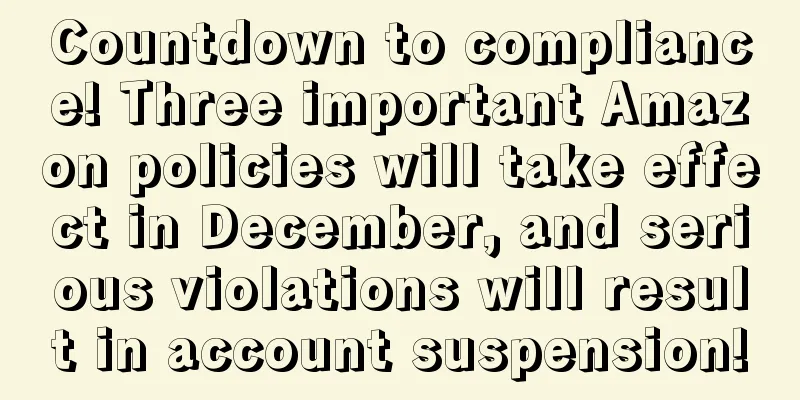It is learned that Forbes recently released the latest 2021 World Rich List. Amazon founder Bezos still ranks first. His personal wealth currently totals 201 billion US dollars. He is the only billionaire on the list with a net worth of over 200 billion. It can be said that no matter how disturbed the outside world is, my brother-in-law's position as the richest man is still as stable as a rock.
As soon as the list was released, #Bezos becomes the richest man in the United States# also became a hot search. Although Bezos' ranking is not something that netizens with a monthly salary of 3,000 yuan should care about, Amazon sellers still have a say in this matter. After all, they are fortunate to have participated in a major project that contributes to the brother-in-law's road to becoming the richest man. A picture that was previously widely circulated in the cross-border circle vividly depicted the humble daily life of Amazon sellers: targeted poverty alleviation in developed countries, giving money to the world's richest people, and working to widen the gap between the rich and the poor. ▲ The picture comes from the seller communication group However, recently, the issuance of a power-rationing order by the state has made the "philanthropists" seem to begin to break free from the shackles of low-price involution. As calls for price increases grow louder, sellers are experiencing a double rebound in sales rankings! At the end of last month, the most stringent power restriction order was issued, which caused a great shock to the cross-border circle. The production capacity of major foreign trade factories dropped sharply, and the freight rates of Matson plummeted. With mixed feelings, the call for stopping internal competition and raising prices in a timely manner is getting louder and louder.
However, despite the growing calls for price increases, many sellers are still on the sidelines, worried that a rash price increase may result in a drop in rankings and a decline in sales . However, there are also sellers who have decisively raised prices and have seen a rebound in both sales and rankings. A seller reported that one of his products was originally priced at 20 euros. The price increased by 5 euros immediately after the power restriction policy was implemented, and increased by another 5 euros after the National Day. However, although the seller increased the price by 50% within 4 days, the product ranking only dropped slightly at the beginning of the price increase, and then grew against the trend, achieving a rebound. ▲ The picture comes from Zhiwubuyan In fact, it is not only this seller who has tasted the sweet fruit of the price increase. A seller said that he raised the price of a product by 7.5 euros, and the ranking did not change much three days after the price increase. Not only did the profit increase, but the ranking also generally stabilized. The seller also set a goal that if the ranking still does not drop too much after the holiday, he will try to gradually increase the price to twice the original price. ▲ The picture comes from Zhiwubuyan Of course, sellers should not be too blindly optimistic about the pros and cons of price increases. One seller warned that after raising the price, the product ranking and sales were stable for half a month. However, when the inertia of the link disappeared, the natural ranking began to slowly decline, and various data such as advertising conversion continued to decline. Even increasing the discount could not remedy the decline. ▲ The picture comes from Zhiwubuyan
However, judging from the feedback from sellers at this stage, price increases are still the general trend. The low-price spiral trend is still popular, making the profit margins of sellers increasingly worrying. Many sellers are unwilling to continue the philanthropic behavior of "targeted poverty alleviation" and are unwilling to pay for the serious inflation in the United States. Some sellers said that in some developed countries such as France and Germany, consumers are more likely to pursue high quality, and low-priced products are more likely to cause them to worry about quality. For sellers, as long as the product quality is up to standard and the price adjustment is within a reasonable range, a proper price increase is likely to bring unexpected benefits. Inventory restrictions are relaxed again, and FBA delivery restrictions are rumors! Now is the critical moment of preparing for the peak season. While sellers are hesitating whether to raise prices, they also need to think hard about how to make a stocking plan. The repeated halving of inventory capacity in the past six months has caused many sellers a headache when shipping, but after entering October, the situation seems to have improved slightly.
▲ The picture comes from the seller communication group Some sellers reported that the storage capacity has increased recently: "It's almost half the price of last quarter. I hope it can be maintained." “60% was released, and the delivery plan was created immediately.” "It has gone up by almost 30%. I have to create a delivery plan quickly, for fear that it will go down again." "It's been upgraded, and those who have signed up for activities can make up for it, but if you can create it, just create it first, because you feel like you can fall back at any time." It is not difficult to see that although the storage capacity has been improved to a certain extent, the repeated fluctuations in storage capacity have already left a psychological shadow on sellers. They can only seize the opportunity to create a shipping plan to avoid worrying that Amazon will take ruthless action at any time. Some sellers also said that Amazon previously reduced its storage capacity in order to make room for products in the second half of the year, and now that the peak sales season has begun, the inventory restrictions will be gradually lifted, and will not be reduced again until at least February or March next year. However, after the peak season, the storage capacity is likely to be greatly reduced, and too much storage will incur huge storage fees. In addition, due to power restrictions in factories, sellers will also need to increase unit prices and make multiple under-supplied orders. In addition to the storage capacity issue, news that FBA will implement a real-name system for entering warehouses has also attracted the attention of sellers. ▲ The picture comes from Zhiwubuyan Recently, there have been reports that starting from October 1, 2021, Amazon warehouse deliveries will require real-name registration, and all FBA numbers must be valid and usable. Expired or invalid FBA numbers will not be put on the shelves even if they are sent to Amazon, and there will be a risk of lost goods. ▲ The picture comes from the seller communication group However, it has been confirmed that this news is actually a rumor fabricated by logistics companies , and sellers do not need to panic too much. It is reported that Amazon has previously issued an announcement. The announcement stated that starting from October 1, 2021, FBA sellers must enter the carrier name and tracking information (if any) during shipment creation so that tracking information can be provided before the shipment arrives at the fulfillment center. ▲ The picture comes from the seller communication group It is reported that Amazon’s statement is mainly to inform sellers to fill in the waybill number as much as possible so that Amazon can receive the goods faster and put the listing on the shelves as soon as possible. It did not mention any measures regarding the cancellation of shipments. Cross-border navigation , sellers please note! Starting this month, you need to provide carrier and logistics tracking information #Amazon##Cross-border headlines#Cross-border e-commerce video account ▲ Video account focuses on cross-border navigation The door to the peak season is slowly opening. At this critical juncture, sellers still need to reasonably adjust prices to ensure profits, create delivery plans in a timely manner according to inventory capacity adjustments, and go all out to meet the peak sales season.
|










